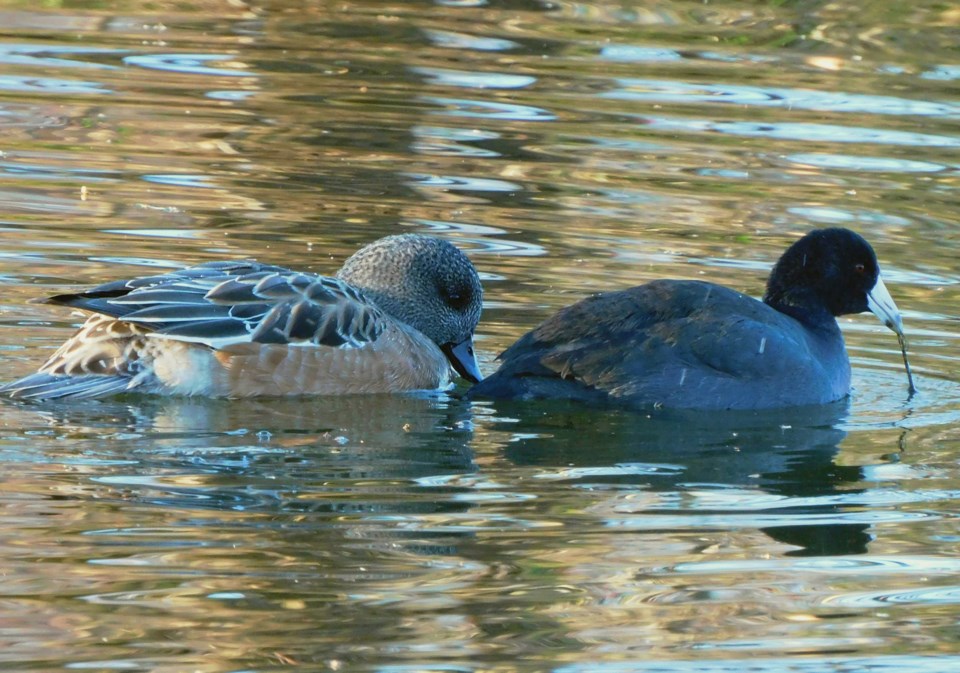Did you know that American Wigeon and Gadwall steal food from American Coots?
This food piracy or kleptoparasitism can be seen here at Reifel Bird Sanctuary when all three species feed together in the deeper sunlit channels in the fall.
Local freshwater sloughs like these have abundant growths of filamentous green algae and vascular plants such as the long, thin-leaved strands of Wigeon Grass and leafy pondweeds of the Potamogeton family.
These growths proliferate all summer and, by fall, the sloughs are full of submerged, juicy mats of green filaments, stems, leaves and seeds. Gadwall and American Wigeon favour this kind of plant material as they are almost exclusively herbivorous.
Gadwall and American Wigeon are surface feeders or “dabbling ducks” so although they can reach down to forage for these aquatic foods in the shallows, they are too buoyant to dive far enough to get food from deeper areas.
American Coots, on the other hand, have streamlined bodies, can dive to almost six metres and seem to prefer to bring food to the surface to eat it.
When underwater food supplies become depleted in the shallows, the American Wigeon and Gadwall, the “food pirates,” start to hover around American Coots when they dive, and lie in wait for plant material to be brought up to the surface.
The plant material is stringy and very breakable at this time of year and some of the debris floats at the surface for a bit, allowing for a “floating food court” for all the nearby birds.
In spite of the thievery, American Coots do not react aggressively, which is a bit odd, but they can turn the tables and steal food from the same ducks when they are all feeding in the shallows. Fair is fair.
Editor's Note: Nature Notes is a twice a month column written by the Delta Naturalists Society and their other community partners.




